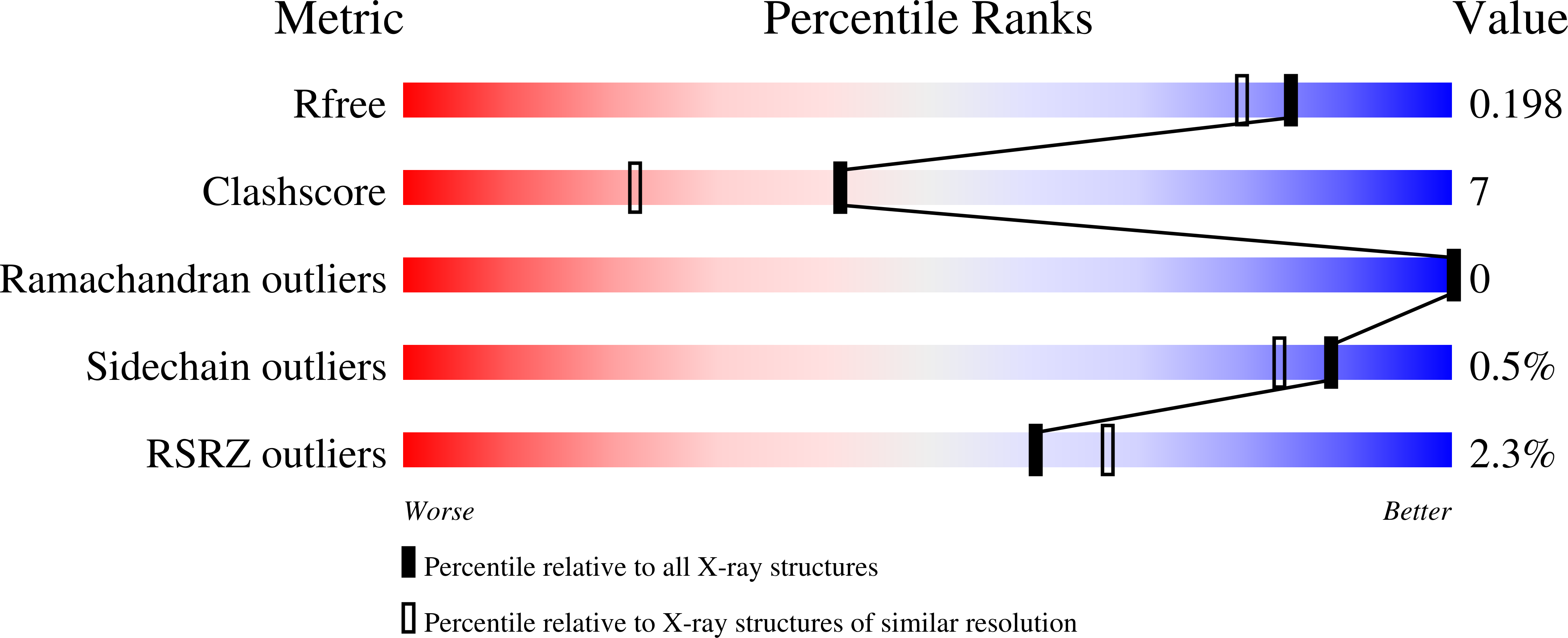Elucidating the concentration-dependent effects of thiocyanate binding to carbonic anhydrase.
Silva, J.M., Cerofolini, L., Carvalho, A.L., Ravera, E., Fragai, M., Parigi, G., Macedo, A.L., Geraldes, C.F.G.C., Luchinat, C.(2023) J Inorg Biochem 244: 112222-112222
- PubMed: 37068394
- DOI: https://doi.org/10.1016/j.jinorgbio.2023.112222
- Primary Citation of Related Structures:
8OGD, 8OGE - PubMed Abstract:
Many proteins naturally carry metal centers, with a large share of them being in the active sites of several enzymes. Paramagnetic effects are a powerful source of structural information and, therefore, if the native metal is paramagnetic, or it can be functionally substituted with a paramagnetic one, paramagnetic effects can be used to study the metal sites, as well as the overall structure of the protein. One notable example is cobalt(II) substitution for zinc(II) in carbonic anhydrase. In this manuscript we investigate the effects of sodium thiocyanate on the chemical environment of the metal ion of the human carbonic anhydrase II. The electron paramagnetic resonance (EPR) titration of the cobalt(II) protein with thiocyanate shows that the EPR spectrum changes from A-type to C-type on passing from 1:1 to 1:1000-fold ligand excess. This indicates the occurrence of a change in the electronic structure, which may reflect a sizable change in the metal coordination environment in turn caused by a modification of the frozen solvent glass. However, paramagnetic nuclear magnetic resonance (NMR) data indicate that the metal coordination cage remains unperturbed even in 1:1000-fold ligand excess. This result proves that the C-type EPR spectrum observed at large ligand concentration should be ascribed to the low temperature at which EPR measurements are performed, which impacts on the structure of the protein when it is destabilized by a high concentration of a chaotropic agent.
Organizational Affiliation:
Magnetic Resonance Center (CERM), University of Florence, Sesto Fiorentino 50019, Italy; UCIBIO, Department of Chemistry, NOVA School of Science and Technology, Universidade NOVA de Lisboa, 2819-516 Caparica, Portugal.

















